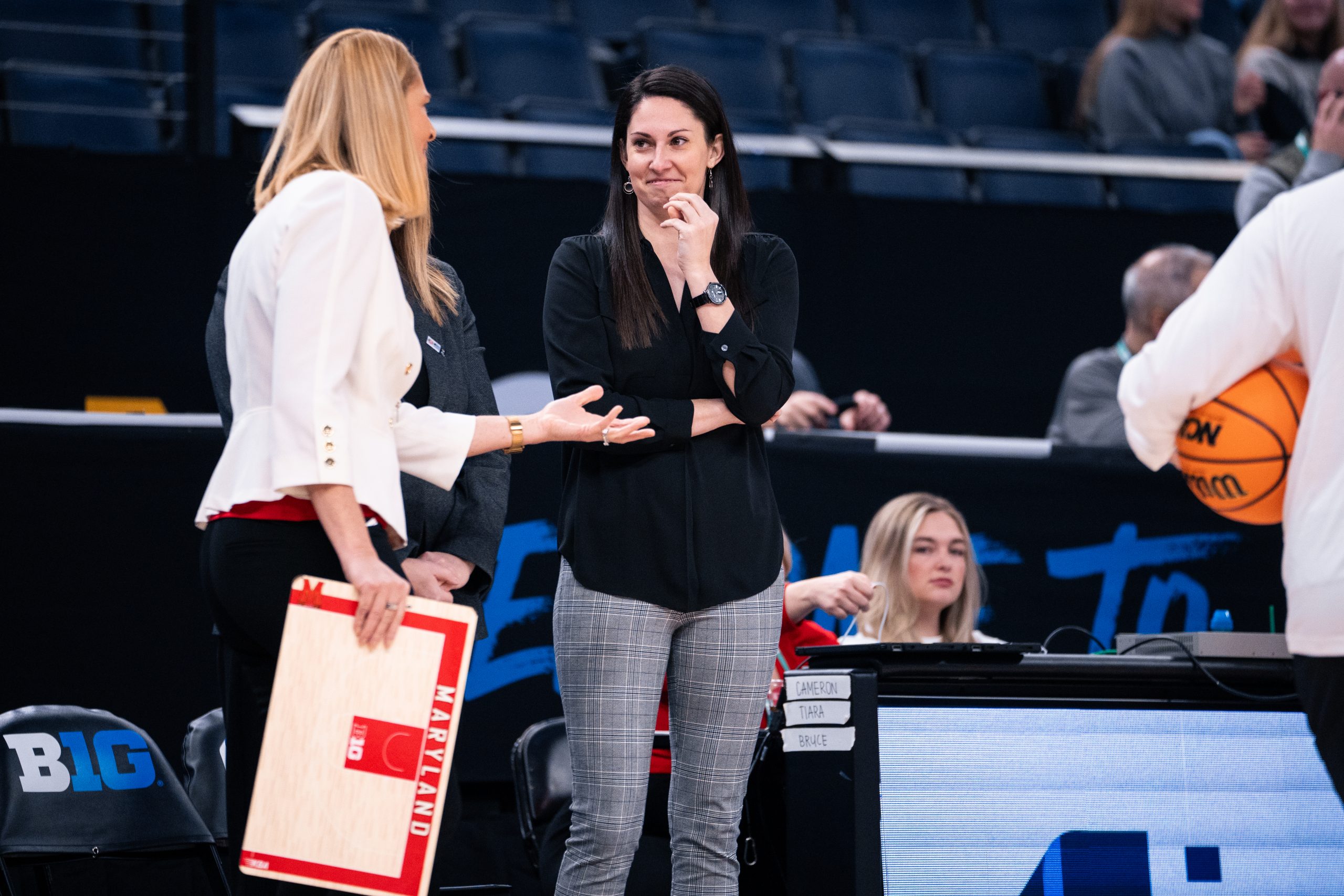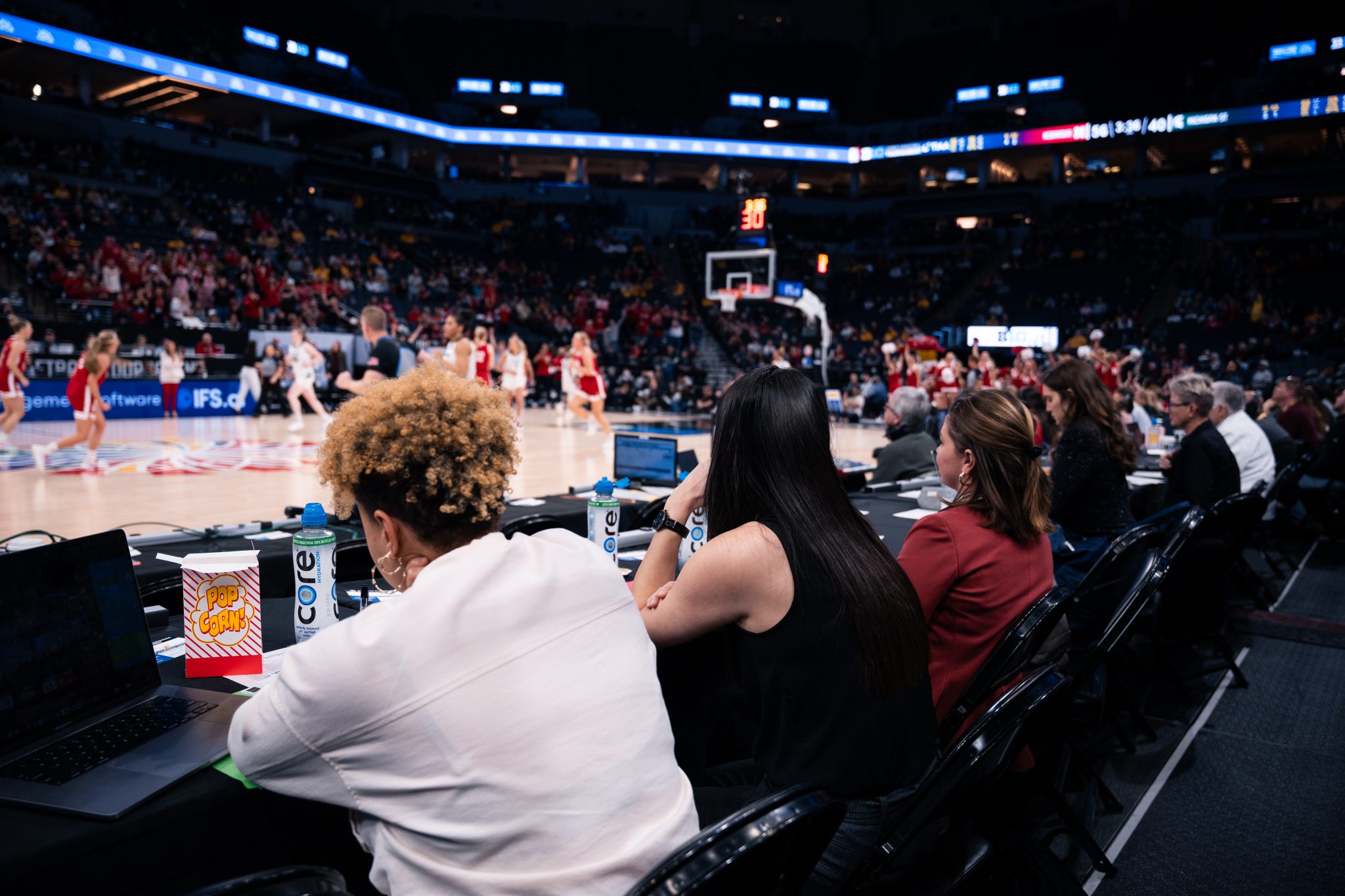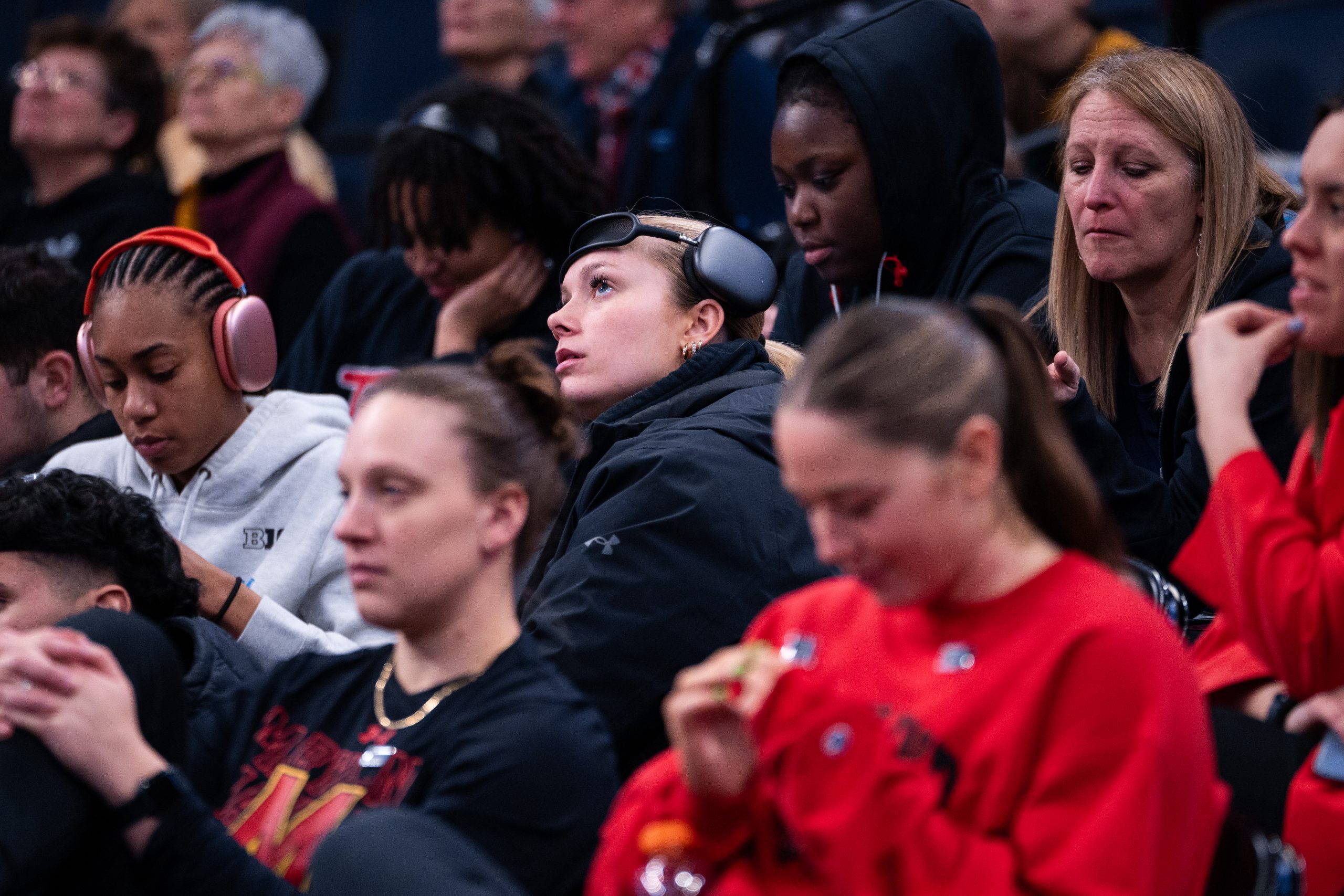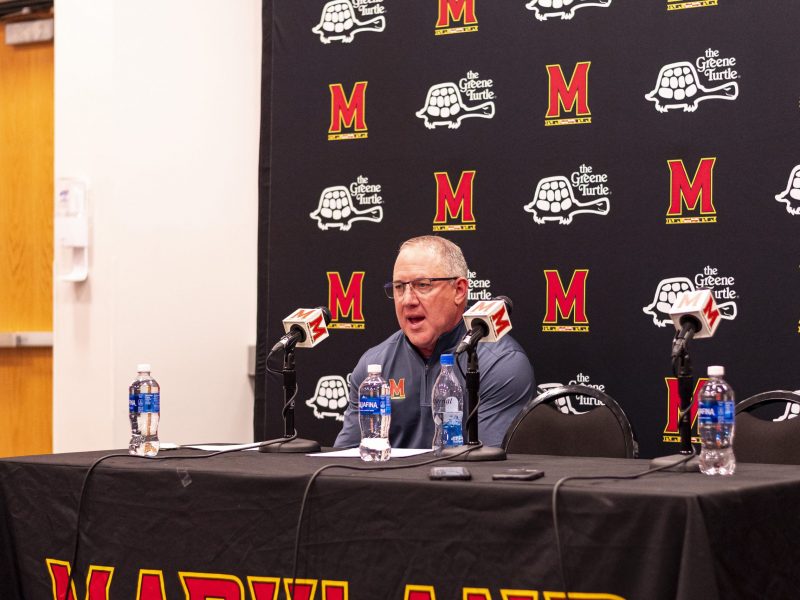After Maryland’s women’s basketball’s upset over top-seeded Ohio State in the Big Ten Tournament quarterfinals, players basked in the after-glow of the victory. They celebrated with the Minneapolis crowd and later sang “Who Let the Dogs Out” in the locker room.
But mere minutes after the celebration, a quartet of Maryland coaches had already turned their focus onto the next game.
Assistant coaches Jessica Imhof, Lindsey Spann and Kaitlynn Fratz and associate head coach Karen Blair settled into seats on press row to scout the Terps’ potential opponents in the semifinal: Nebraska and Michigan State.
Spann took notes on pen and paper with a box of popcorn nearby. Imhof also started on paper but moved chunks of observations onto her laptop at the end of each quarter. All the while, the four coaches shared their insights — identifying the other team’s tendencies and how Maryland could exploit them.
Maryland is 22-5 in the Big Ten tournament and has won five championships, the first coming in 2015, its inaugural season in the conference. Coach Brenda Frese holds the highest winning percentage of any coach in Big Ten tournament history. The program’s advance scouting process is a key cog in that success.
“They’ve been working behind the scenes. They always do a terrific job,” Frese said.

[Maryland women’s basketball bows out in Big Ten tourney semifinal, loses 78-68 to Nebraska]
The NCAA usually prohibits teams from traveling to scout future opponents in person. Those restrictions are lifted when those future opponents are participating in the same tournament at the same site — like the Big Ten tournament at the Target Center.
The Terps’ scouting process begins much earlier. Imhof, Maryland’s scouting director, said she started analyzing potential tournament opponents in February.
Even earlier in September, Blair, Spann, Fratz and assistant coach Noelle Cobb divided the Terps’ opponents among themselves to scout, putting together video for the team to watch. Meanwhile, Imhof writes a report on the opponents.
At the tournament, Maryland spends more time scouting opponents it hasn’t played in a while, Imhof said.
Imhof spends most of her day watching film on a laptop. Live scouting in Minneapolis offers a nice reprieve and otherwise hidden details such as play calls, she said.
“[You see] player reactions, coach reactions,” Imhof said. “You get the nuances of a team and how they go through a game rather than just, ‘I’m watching sets.’”
Imhof said she’s already done most of the scouting before the tournament — anything she gets from a live viewing is a bonus.
[Maryland decimates top-seeded Ohio State, 82-61, advances to Big Ten tourney semifinal]
Maryland’s players also watched the first half of the Nebraska-Michigan State matchup, although in a less rigid manner. Faith Masonius watched from the first row while Jakia Brown-Turner and Allie Kubek lounged in headphones.
At halftime, the coaching staff met to discuss their takeaways. The players left — their preparation came later.
Each player received two full games of film of the Terps’ next opponent, along with Maryland’s previous matchup against that team, Imhof said. All of it needs to be studied as soon as possible.
“It’s an emphasis on going back now, eating a meal, getting off our feet, doing recovery, watching film,” Brinae Alexander said after the Terps’ win against Illinois.
Imhof said she will watch up to seven games of an opponent. She might even watch an early season non-conference matchup if she thinks an opponent plays similarly to Maryland.
Imhof also always reviews any of the Terps’ games against potential foes.
“It’s the most realistic of situations to see how they’ll guard something or what their go-to is to run against us,” she said. “There’s always games that are played completely different every time you play an opponent, that’s the beauty of the game. But there’s still always things you can pull out.”
Frese and her staff have created an efficient and detailed system that’s not overbearing for players. The information gathered from the hours coaches spend dissecting film and scouring scouting services is condensed and then presented to players to avoid an information overload.
It’s exhausting. Imhof loves it.
“For me, I think that’s why I’m in this job,” she said. “The most fun part of scouting for me is when we play an opponent a second, third, fourth time, because that’s when you can really make adjustments.”




